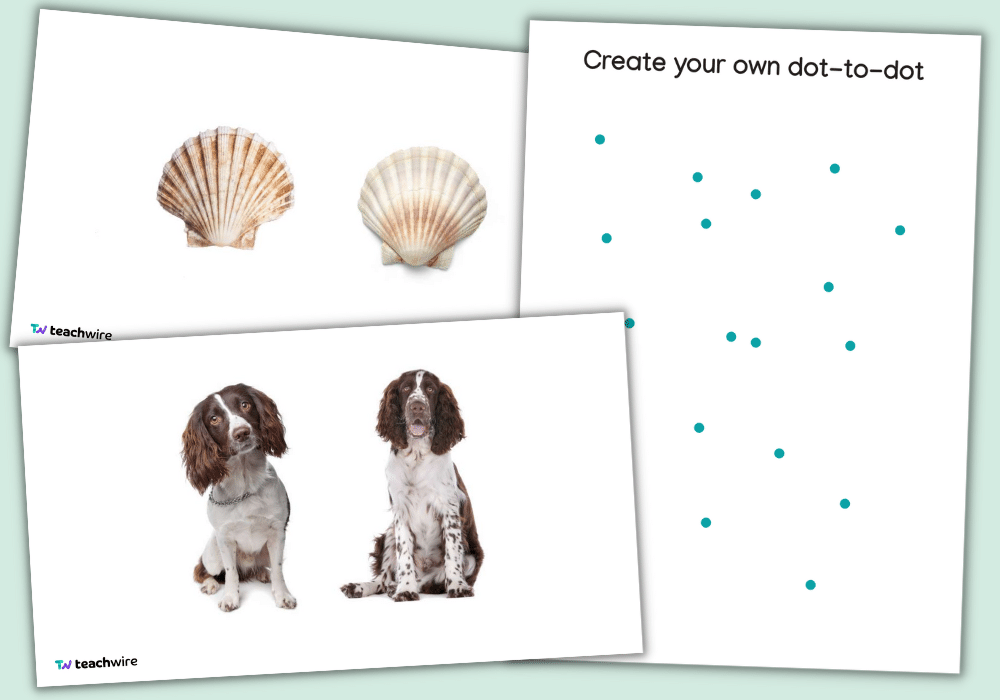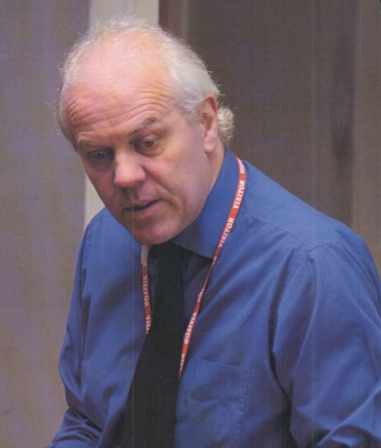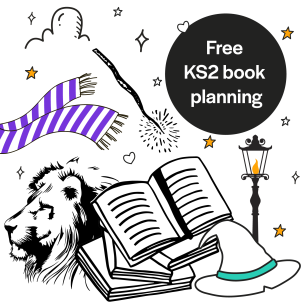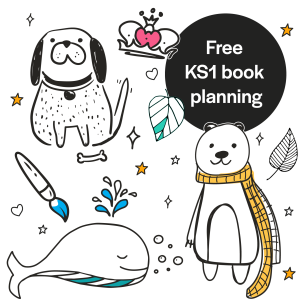'Dot to dot' printable worksheet and 'Spot the difference' Powerpoint
KS1, KS2
Years 1-6
Children’s brains a little rusty? Get them in the mood for learning and develop their thinking skills with these quick and easy English starters for primary…
8 English starters to try
1 | Penny for your thoughts
This is a flexible activity that can be focused into different topic areas. Children can either work alone or in pairs. Initially give each child (or pair) two pennies and ask them to spot as many differences between them as they can.
Prompt the children by asking them to look at patterns of wear, degree of polish or dullness, as well as more obvious differences such as dates, wording and images.
Develop children’s observational skills by showing them pictures of flowers, insects, shells and so on that look almost the same. Try the game with similar words – where / were / we’re for instance. At this stage it’s not important for children to be able to explain the differences, merely to notice them.
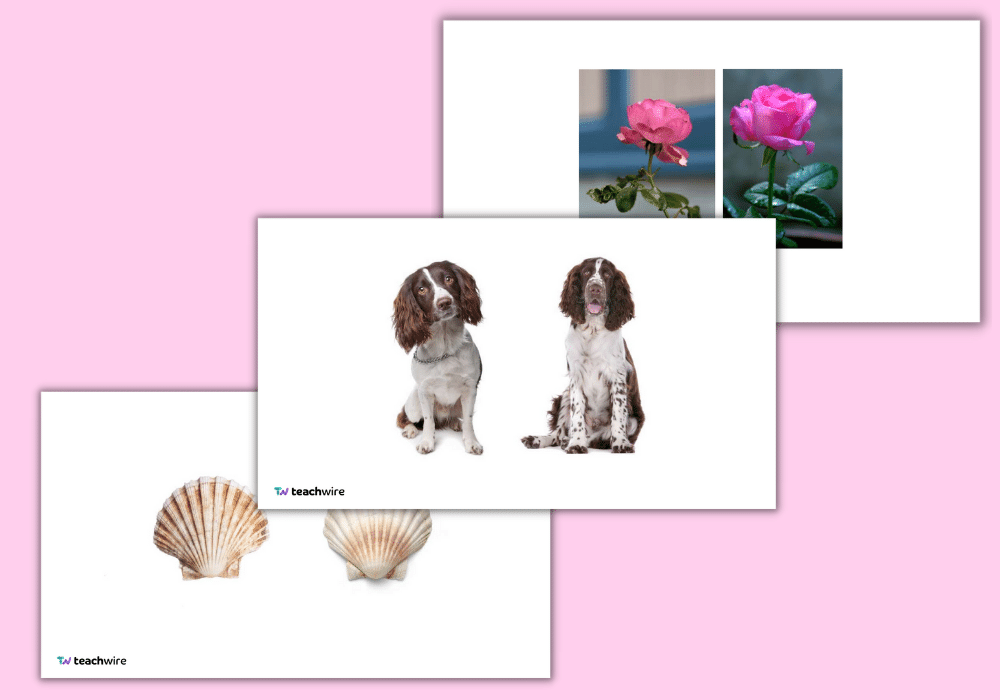
2 | Stellar stories
Prepare a template where you scatter dots randomly over a sheet of A4 paper. Make copies to give out to groups. Prepare the class by looking at pictures of well-known constellations: Taurus, Orion, Ursa Major, etc.
Ask the children to create their own join-the-dots people, objects and creatures on the templates. You can extend the activity by telling them some of the legends behind constellations before asking them to create stories explaining their own inventions.
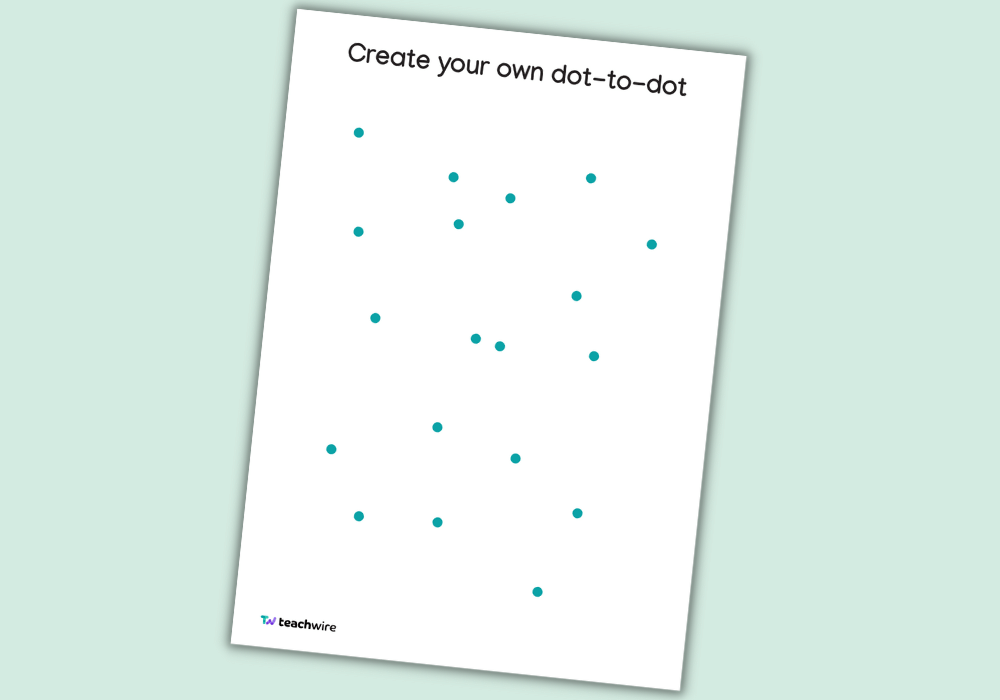
3 | Playing with patterns
You will need plenty of coloured counters for this English starters activity. Begin by creating some patterns and asking the class if they can work them out, giving a few examples beforehand.
So, for instance, five red counters and two blue could be weekdays and the weekend; and four green, four yellow, four orange and four blue would represent the twelve months of the year through the four seasons.
When children have worked out some of your patterns, invite them to create new ones of their own.
4 | A cloud of questions
Show the class an everyday object, such as a pencil. The task is to ask as many questions as possible about the pencil in a certain time, say two minutes.
Give a few examples beforehand – why is it called a pencil? When were pencils first invented? How do you get the lead inside the pencil? And so on. Ideally the questions should be noted down.
Extend the activity by doing a ‘questions analysis’. Which questions can be answered easily? Do some questions theoretically have an answer but one that can never be found (eg how many pencils exist in the world?). Which areas of knowledge do the questions apply to – history, science, literacy etc.
Take things further by encouraging children to question a statement such as, ‘Napoleon died on St Helena. Wellington was very saddened’. Who was Napoleon? When and how did he die? Where is St Helena? Why was he there? Who was Wellington? Why was he saddened?
This activity helps children to become more proactive in their learning, rather than be the passive recipients of facts and opinions.
5 | The maybe hand
Use a vague sentence such as ‘Jones lay slumped on the sofa’. Invite the children to open their hand palm upwards and imagine that the sentence is written in the middle. The fingers and thumb represent ‘maybes’ in answer to a prompt question such as ‘Who or what is Jones?’
Maybe he’s a child, maybe a man, maybe a woman, maybe a cat, maybe a dog. The maybe hand is a visual and tactile representation of speculation as a thinking skill.
The words or object imagined on the palm is the focus for the thinking while the fingers and thumb represent five possible answers. The technique also encourages children to think beyond a single answer.
6 | Sticky words
Explain to the class that ‘because’ is a ‘sticky’ word; whenever you use it you have to stick a reason on to it. Again use a vague sentence, such as the one in ‘the maybe hand’.
Invite children to come up with an interesting and appropriate reason each time you say ‘because’. So – Jones lay slumped on the sofa because? (He was tired.) He was tired because? (He’d been working hard.) He’d been working hard because? (He needed to save £500.) He needed to save £500 because… And so on.
7 | Indefinite definitions
Begin by giving children a definition to think about. For example, ‘bird’. ‘A bird is a feathered animal that flies.’
Ask how many children agree with that description before you begin to challenge it. What about flightless birds such as ostriches? What if a bird is dead, in a cage or has had its wings clipped? Encourage the children to wrangle with these questions in an attempt to refine the definition.
8 | The ultimate 20 questions
Want more English starters? This old favourite can be used to sharpen children’s reasoning and questioning skills.
As a variation on the familiar game, prepare a grid focused on a particular topic such as animals. Place a picture of a different animal in each box and write vocabulary related to the topic around the grid. Then run the game as normal, encouraging the children to incorporate as much of the vocabulary as possible into their questions.
Extend the activity by doing a questions analysis afterwards. Which were the most useful questions in working towards an answer? Which questions were not so useful and why? Can pupils highlight the most frequently asked questions?
Steve Bowkett is a children’s author who runs creative workshops in schools. Browse KS3 English games ideas.
